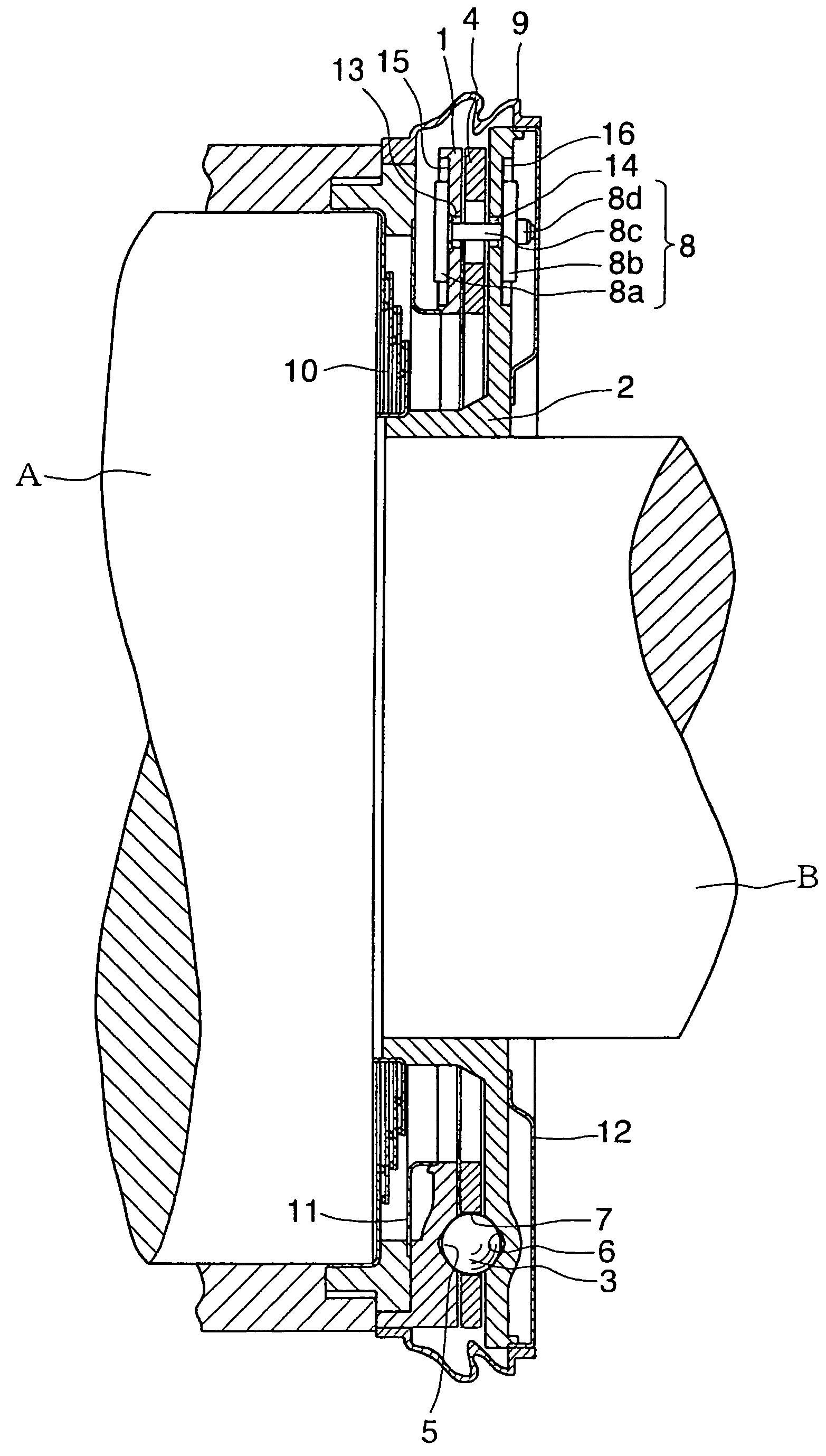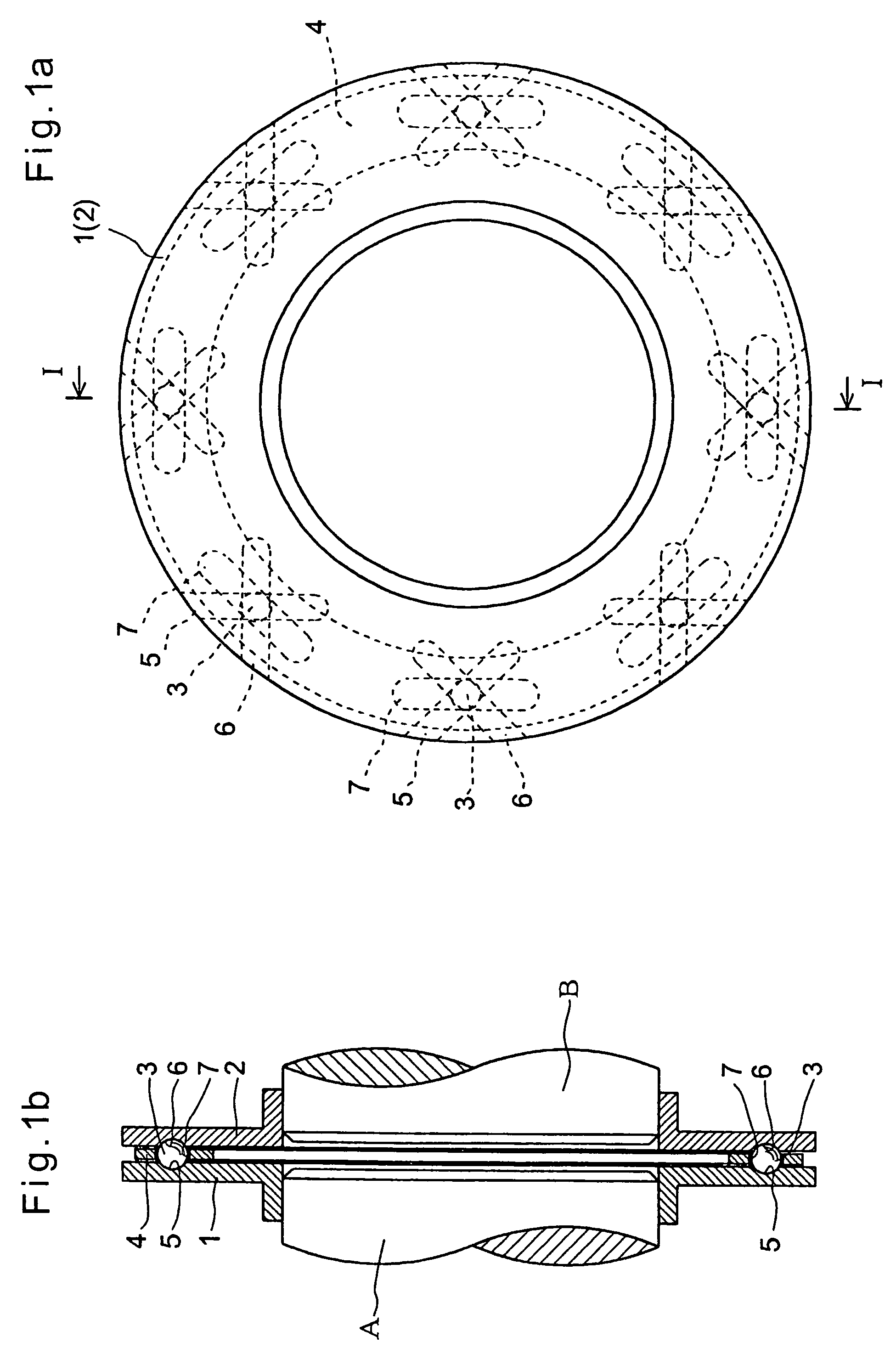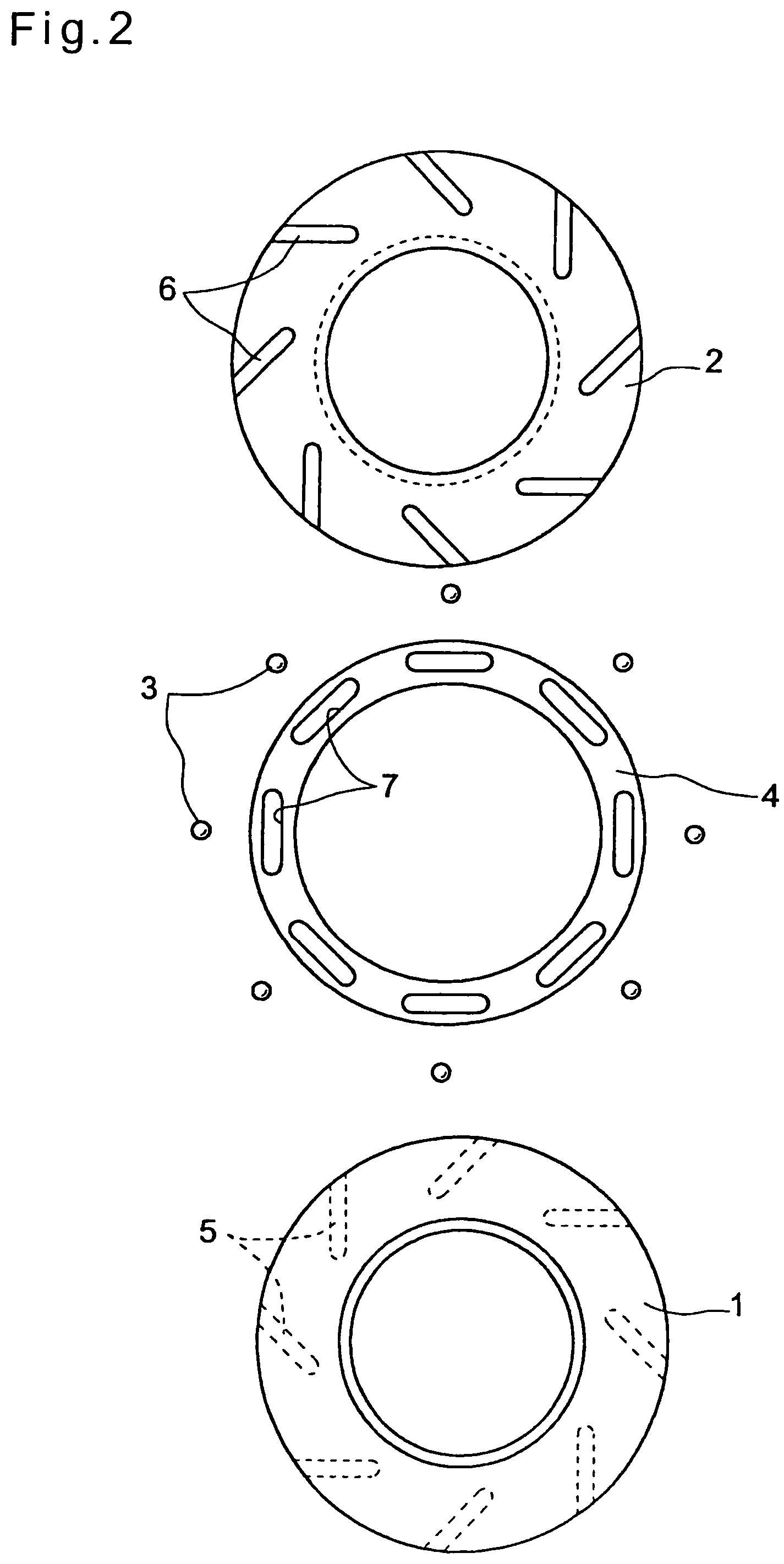Shaft coupling
a shaft and shaft technology, applied in the direction of shafts, yielding couplings, shafts, etc., can solve the problems of increasing the size of the entire apparatus, affecting the smooth transmission of power, and reducing the efficiency of the shaft, so as to reduce the rattling of the rolling elements, increase the power, and smooth the effect of transmission
- Summary
- Abstract
- Description
- Claims
- Application Information
AI Technical Summary
Benefits of technology
Problems solved by technology
Method used
Image
Examples
Embodiment Construction
[0044]Now referring to FIGS. 1(a) to 8(b), the embodiments of the present invention are described. FIGS. 1(a) to 3(b) show the shaft coupling of the first embodiment, which comprises, as shown in FIGS. 1(a), 1(b) and 2, plates 1 and 2 as rotary members that are fitted on opposed ends of input and output shafts A and B, respectively, that are equal in diameter and having their central axes extending parallel to each other, a plurality of steel balls 3 as rolling elements that are disposed between the plates 1 and 2, and a retainer 4 that restricts radial movements of the steel balls 3. Power is transmitted between the plates 1 and 2 through the steel balls 3. The plates 1 and 2 and the retainer 4 are made of a metallic material. The plates 1 and 2, retainer 4 and steel balls 3 have their surfaces subjected to heat treatment or hardening treatment such as shot peening. In FIG. 1, for simplicity, the input and output shafts A and B are shown to be aligned with each other. But ordinaril...
PUM
 Login to View More
Login to View More Abstract
Description
Claims
Application Information
 Login to View More
Login to View More - R&D
- Intellectual Property
- Life Sciences
- Materials
- Tech Scout
- Unparalleled Data Quality
- Higher Quality Content
- 60% Fewer Hallucinations
Browse by: Latest US Patents, China's latest patents, Technical Efficacy Thesaurus, Application Domain, Technology Topic, Popular Technical Reports.
© 2025 PatSnap. All rights reserved.Legal|Privacy policy|Modern Slavery Act Transparency Statement|Sitemap|About US| Contact US: help@patsnap.com



